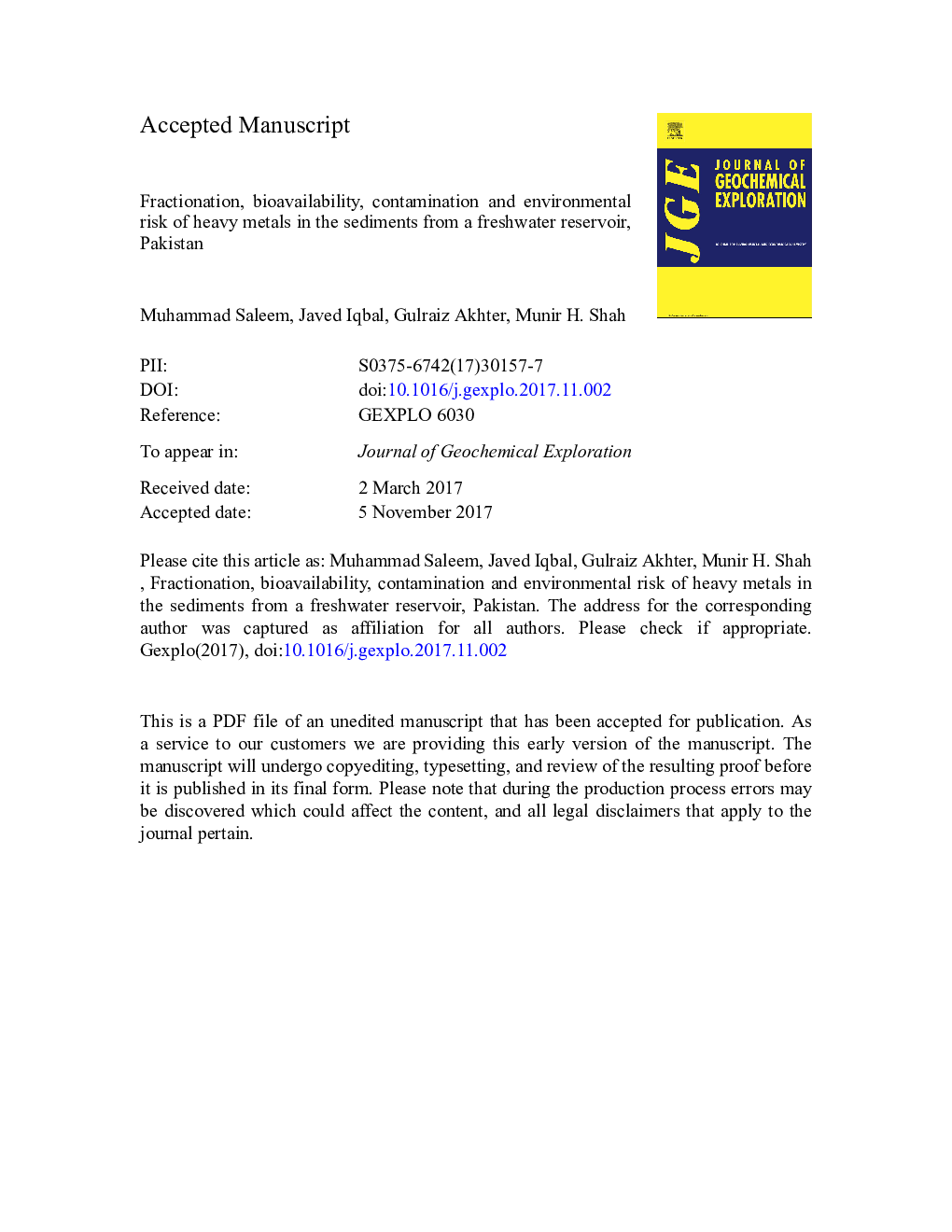| Article ID | Journal | Published Year | Pages | File Type |
|---|---|---|---|---|
| 8866194 | Journal of Geochemical Exploration | 2018 | 25 Pages |
Abstract
Fractionation of heavy metals (Cd, Co, Cr, Cu, Fe, Mn, Ni, Pb and Zn) was studied using modified Community Bureau of Reference (mBCR) sequential extraction procedure in the sediments collected at eight sites from a freshwater lake, Pakistan. Metal fractionation showed high percentage recoveries of Cd, Co, Ni and Pb in three bioavailable fractions. The results relating potential mobility of the metals manifested following order: Cd > Pb > Ni > Co > Fe > Mn > Cr > Cu > Zn. Risk assessment code indicated medium risk for Co and Ni, medium to high for Cd and high to very high risk for Pb in the sediments. Comparison with sediments quality guidelines revealed heavy metal risk to aquatic organisms as the measured levels of Cd, Ni and Pb were higher than the prescribed levels. Enrichment factor revealed moderate enrichment for Cr, moderate to severe for Ni, severe for Co and Zn, severe to very severe for Pb and extremely severe enrichment for Cd. Contamination factor manifested moderate contamination for Co and Zn, considerable for Pb and very high contamination for Cd. In addition, pollution load index indicated high metal pollution load at a couple of sites. Spatial variability indicated relatively higher metal load at sites which were adjacent to urban and semi-urban areas. Therefore, it would be necessary to control the discharges of untreated urban/industrial wastes, agricultural runoffs and automobile emissions into the Lake.
Related Topics
Physical Sciences and Engineering
Earth and Planetary Sciences
Economic Geology
Authors
Muhammad Saleem, Javed Iqbal, Gulraiz Akhter, Munir H. Shah,
